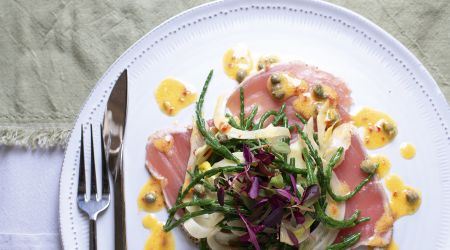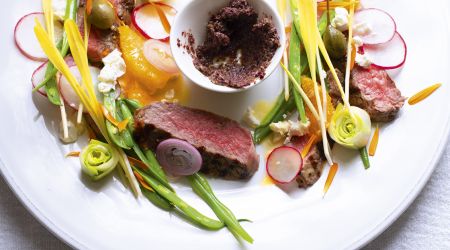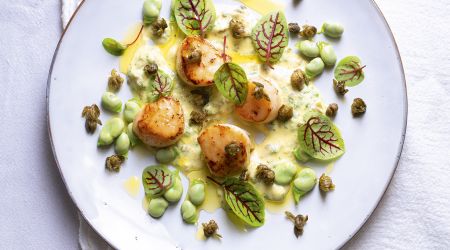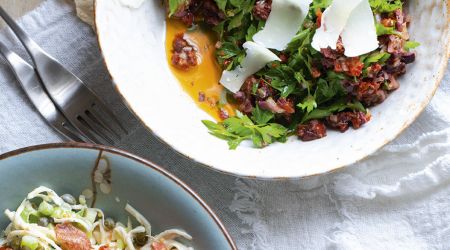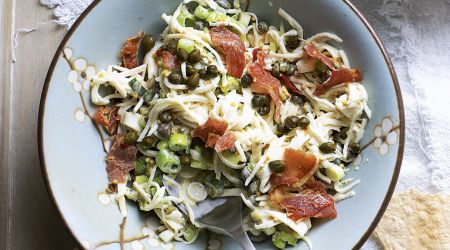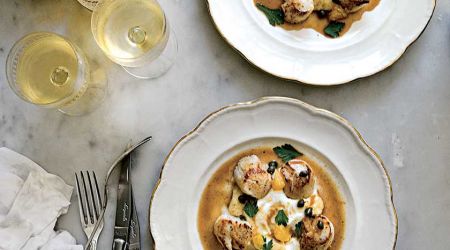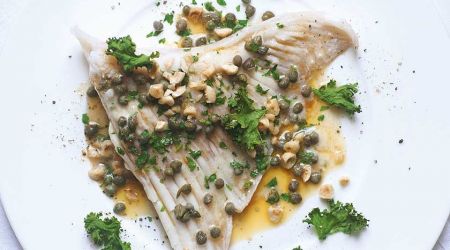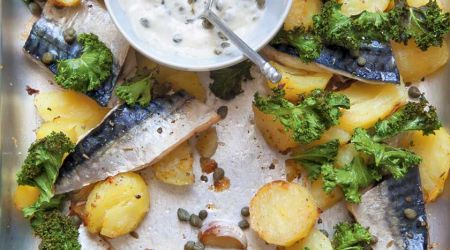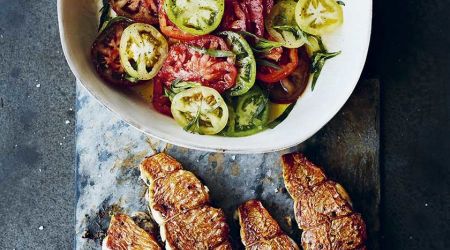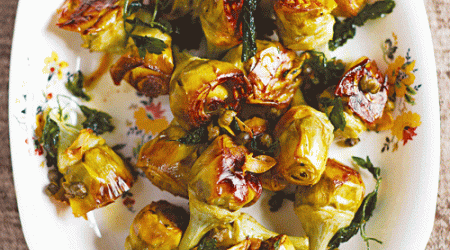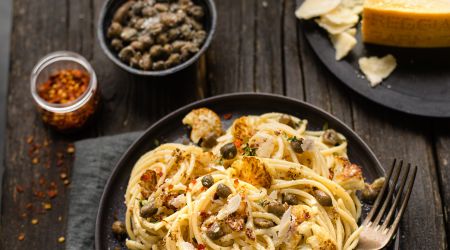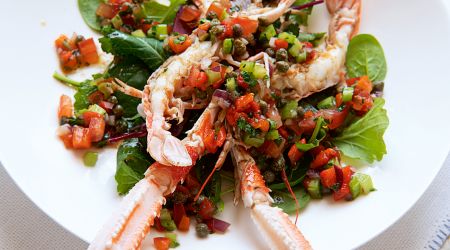Capers
These edible flower buds enhanced dishes in arid regions of the world as early as 2000BC. Linda Tubby shares some of her favourite recipes, while Clarissa Hyman traces their history
What are they?
In the old city of Jerusalem, you can easily spot trailing, straggly plants that sprout between the massive sacred stones of the Western Wall. They are small caper bushes of the sort typically found growing wild throughout the Mediterranean, creeping down old walls, across building sites, sprawling over rough ground or along the roadside. The buds of the unopened, immature flowers are the capers and can only be hand-picked in the morning as they wither quickly in the heat. In fact, the life of each flower is so short you have to crop them each day when they have reached just the right degree of plumpness but before they burst open. It’s a labour-intensive process, even with cultivated capers, let alone the wild ones. The buds are left to dry for 24 hours and then mixed with good-quality vinegar or salt. Fresh capers are not used in the kitchen because the characteristic tangy, slightly bitter flavour is only developed by pickling or processing, when capric acid is formed.
The origins
Low and bushy with oval leaves, caper plants have tenacious spikes – hence a Turkish name for them meaning ‘cat’s claw’. On the other hand, they have beautiful flowers, described by food writer Drew Smith as a ‘waterfall of purple stamens against four white or pink petals’. Their scent is often compared to a heady blend of honeysuckle and jasmine. The plants are found as far south as the Sahara and as far east as northern Iran, although they possibly originated in western and central Asia, and they’re referenced in the Sumerian Epic of Gilgamesh as far back as 2000BC. They are certainly ideal for a desert or arid existence since the plant remains green, its stems and leaves juicy with sap even in strong sunlight or when the soil around its roots has dried up.
Since antiquity, their culinary role has been to lift otherwise insipid foods: the Romans used them in making the omnipresent fish sauce; and they were popular as a relish or condiment in Britain in Tudor and Stuart times, imported by the barrel-load from southern Europe. During the Renaissance a French surgeon praised their dietary contribution, writing: ‘Capers are good, in that they sharpen the appetite and relieve bile.
Tasting notes
It’s best to use the ones in vinegar brine for everyday cooking, which are widely available. The cheapest are pickled in a harsh, penetrating vinegar, so look for those marinated in quality wine vinegar. Capers packed in dry salt, especially the large, intensely flavoured ones from Sicily, have an especially fresh and aromatic flavour. They must be soaked or at least rinsed well before use. Capers used to be graded in seven different sizes, with nonpareille being the smallest (and therefore the most expensive, given the labour of harvesting) and prized. The best are thought to come from the French department of Var, where the plants are set out in sunny terraces. Most of the capers in British supermarkets, however, now come from Morocco or Turkey.
Any benefits?
They may be tiny but they should not be underestimated: capers contain a variety of antioxidants plus Vitamins A and E. When drained, a tablespoonful contains only two calories.
Go well with...
The sharp pungency makes them a great match for roasted sweet peppers for use in salads and antipasti, and lemon and garlic are natural companions. Add them, along with gherkins and herbs, to tangy tartare sauce and remoulade and ravigote sauces; sprinkle on pizza; use in a black butter sauce with skate; pair with cod and green olives in the Sicilian style; and match them in the Spanish way with fried fish, almonds, garlic and parsley. They are also good in chicken and rabbit casseroles and can add a welcome sharpness to many dishes made with rich meats, and they give a distinctive accent to Austrian liptauer cheese. Their quintessential use in English cookery is in caper sauce to accompany mutton or fish, but ingredients expert Tom Stobart confides that addicts eat them on bread and butter when nobody is looking.
Quick tips
Add a few, along with lemon zest, to a chicken sandwich; toss a handful over a plate of smoked salmon; scatter to give a little burst of flavour to pasta dishes; sprinkle in creamy scrambled eggs or a tuna salad. And make a great caper butter to serve as an accompaniment to fish or barbecued meats by mashing, then chilling, capers with butter and lemon juice (use a wooden spoon!). When cooking with them, add towards the end as lengthy cooking tends to bring out an undesirable, bitter flavour
How to showcase them
Use dry-salted rather than brine-packed capers in a good piquant tapenade along with sweet Niçoise olives, best extra-virgin olive oil and canned anchovy fillets to top quails’ eggs or as a dip for hunks of French bread. Salsa alla puttanesca is always a dramatic addition to a main course. Croustades have slightly fallen out of fashion but go for a retro party revival with a filling of drained capers, coarsely chopped mozzarella, sliced mushrooms and black pepper (to be eaten in the hand along with a big white napkin and a jug of Bloody Mary). Or keep it as simple and elegant as chef Jason Atherton in his new Café Biltmore Restaurant & Terrace in London’s Mayfair with classic grilled Dover sole with capers, lemon, parsley and citrus hollandaise.
Anything else?
The caper berry or caper fruit is a variation where the fruit grows on after flowering. These are then pickled in vinegar with herbs, and eaten on the stalk like a cherry without a stone. Although their taste is similar to that of capers, they are less intense with seeds that are soft and slightly crunchy: nibble them like olives with a piece of mature cheddar or platter of cold meat. A frequent alternative in the past when capers were unavailable were nasturtium seeds pickled in vinegar with spices.
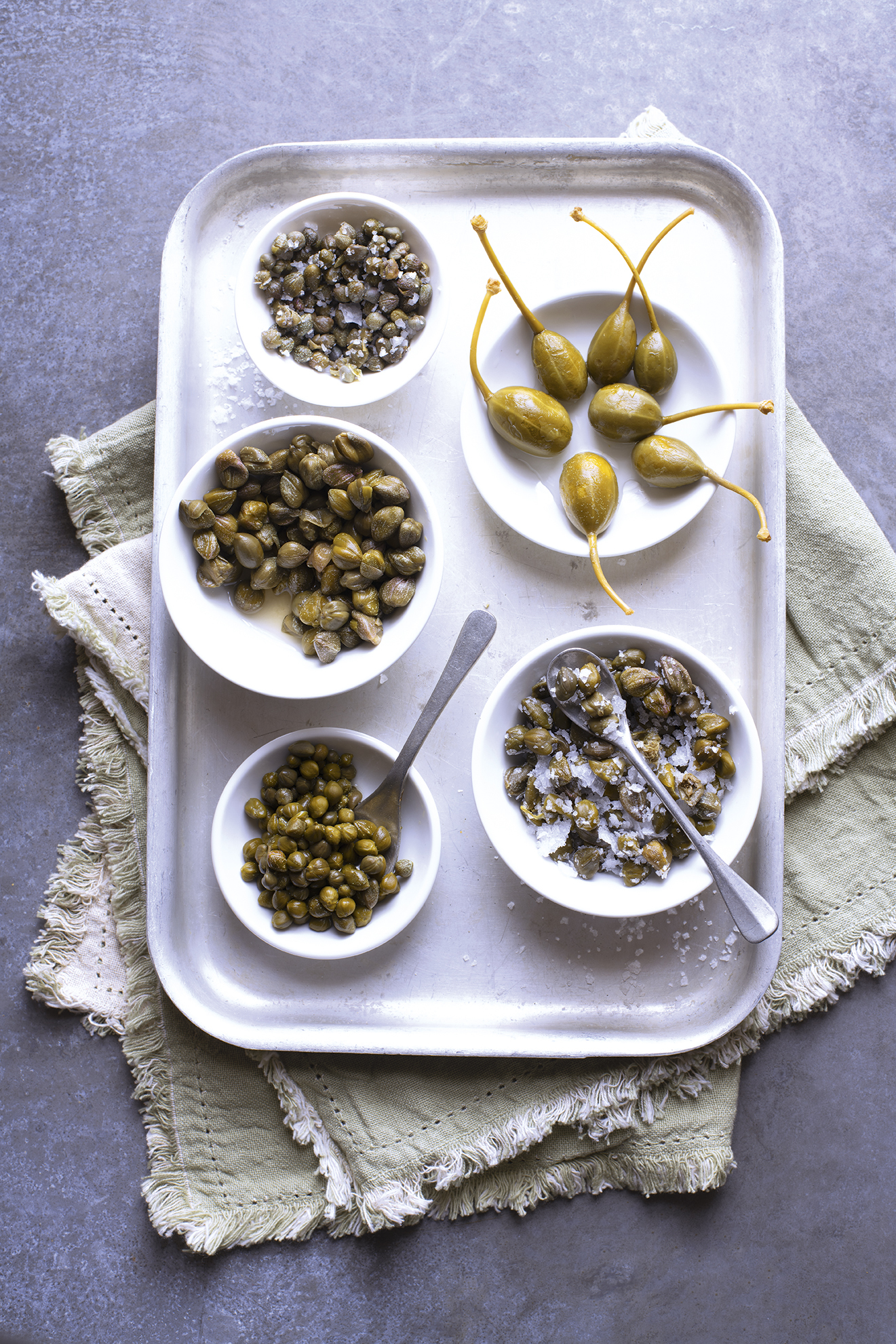
Recipes
Get Premium access to all the latest content online
Subscribe and view full print editions online... Subscribe

